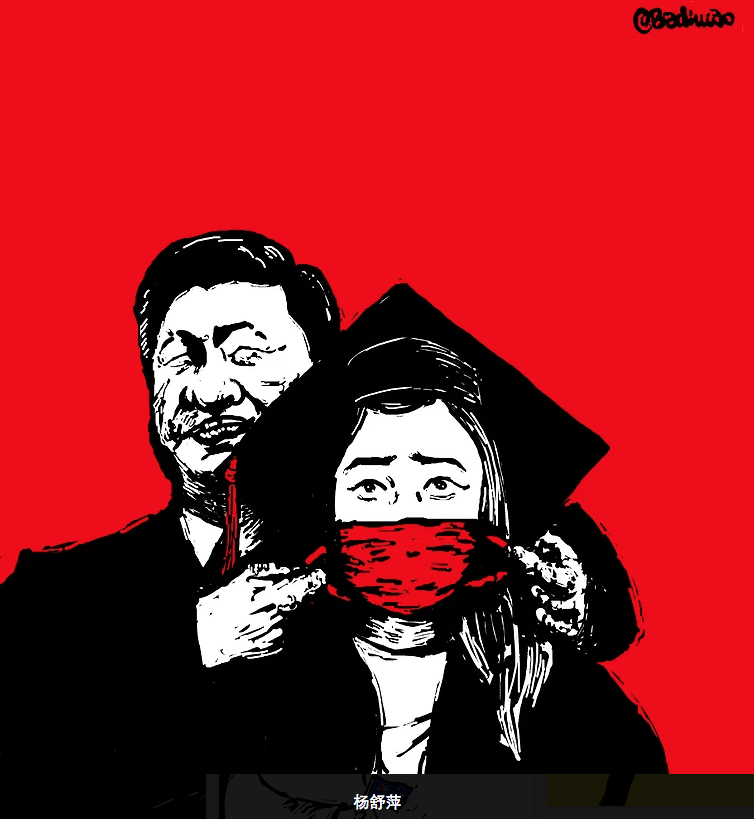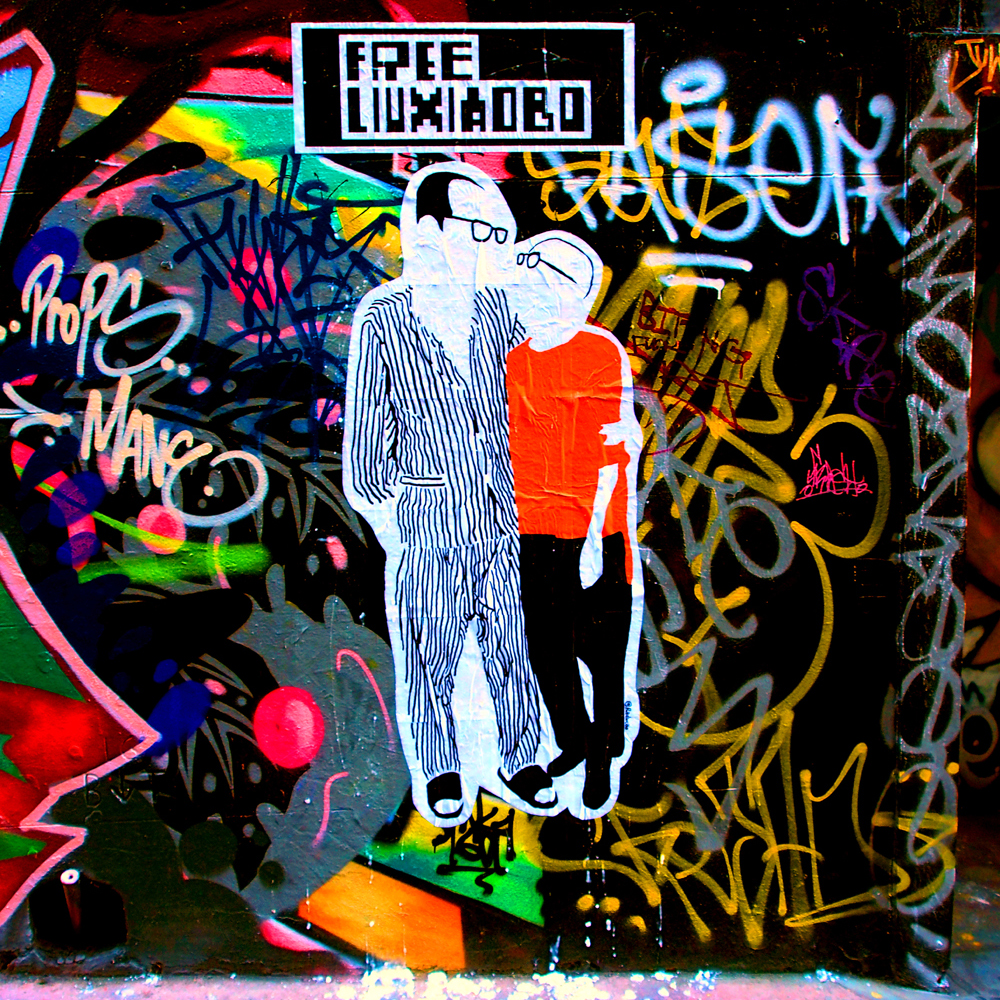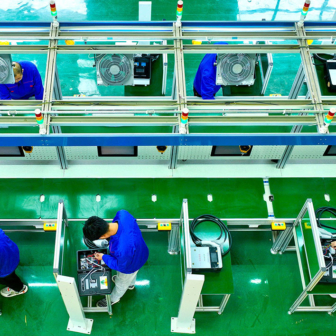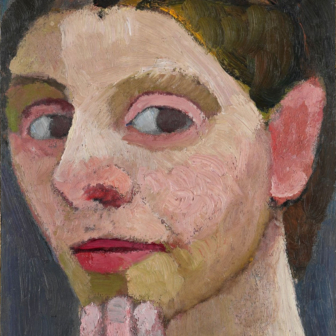The most internationally famous of Australia’s 1.2 million people of Chinese ethnicity “came out” this week. He is the best-known Chinese cartoonist in the world, and each of his major works has been downloaded millions of times. Until this week he invariably wore a mask during his rare public appearances and agreed only to be interviewed via Skype to protect family members back in China. He is known only by his pen-name, Badiucao.
The Shanghai-born artist is a powerful critic of the ruling Chinese Communist Party, and has drawn many unflattering cartoons of its general secretary Xi Jinping, usually in his trademark German expressionist style. Cartoon images of Chinese leaders are banned in the People’s Republic, so Badiucao’s caricatures — regularly featuring Xi as “silly old bear” Winnie the Pooh — pack an unusually powerful punch for mainlanders with access to his platforms.
Badiucao, who remains reluctant to use his real name, revealed his face towards the end of China’s Artful Dissident, a new film by Australian documentary-maker Danny Ben-Moshe, broadcast by ABC TV on Tuesday night. Now thirty-three, and having lived for a decade in Australia, he also revealed himself at the simultaneous premiere of the film in Melbourne, where he received two standing ovations and answered questions from an invited audience.
Late last year the artist had cancelled an exhibition of his work — including a portrait that merged features of Hong Kong chief executive Carrie Lam with those of Xi Jinping — after members of his family, who knew nothing about his life as a controversial artist, were interviewed by police in China. They were given the impression that more trouble would follow if the show went ahead.

Banned: Badiucao’s Xi Jinping.
Badiucao already feared that the Chinese authorities had discovered his true identity.
He spent much of last year in Berlin, where the celebrated dissident artist Ai Weiwei had invited him to work. The writer Liao Yiwu, also a Chinese exile resident in Berlin, had responded strongly to criticism by Badiucao, who feared that his identity was revealed by Liao during a testy exchange of tweets.
The two incidents — the pressure on his family, and his identity exposure — drove Badiucao out of public view for six months, until the looming anniversary of the Tiananmen killings sparked new creative work. Now that Beijing knew who he was, he decided to reveal himself to the public.
Badiucao has also exhibited photographs, and is a performance artist. On one occasion he entered the Louvre, in Paris, dressed as Liu Xia, the widow of the late Nobel Peace Prize winner Liu Xiaobo, who had died of cancer incarcerated in China. At the time, Liu Xia — who has since been allowed to leave China, and is living in Berlin — was still being held incommunicado in Beijing. Before being hustled away by security officers, Badiucao and two supporters unfurled large banners in front of the Mona Lisa, urging visitors to “Remember Liu Xia.”
His reputation broke out of the Chinese-speaking world when he painted an affectionate portrait of Liu Xiaobo and Liu Xia, with their arms round each other, on a wall in Hosier Lane, Melbourne, where the city council encourages street art. The painting appeared overnight, shortly before Liu Xiaobo died. Soon, piles of bouquets were laid in front of the picture, candles were lit, and someone provided a brief profile of the great writer and philosopher in Chinese and English. The work was rapidly copied and, with Badiucao’s strong support, reproduced in public areas in cities around the world.

Break-out: Badiucao’s portrait of Liu Xiaobo and Liu Xia in Melbourne’s Hosier Lane.
Last Monday he installed a massive new work in Hosier Lane featuring “Tank Man,” the celebrated figure who, still gripping his plastic shopping bags, forlornly attempted to halt the progress of a file of tanks from Tiananmen Square thirty years ago. Badiucao recalled learning of the events in and around Tiananmen Square only when he was watching a a movie downloaded from the internet that suddenly switched to a foreign documentary about the killings, which had been recorded over it. The episode has since become central his work. Masked but otherwise dressed as Tank Man, and also holding shopping bags, he stood on a plinth in Adelaide’s city centre on 4 June 2016.
Badiucao’s grandfather, a pioneering film-maker in China, starved to death in a labour camp in Qinghai after being sent there during the anti-rightist purges of the 1950s. Partly as a result, he told me in an earlier interview for the Australian, his parents’ lives were “stolen by politics” to the extent that they never discussed public events. But “rebellion began to brew inside of me,” he adds. His family, which had lost a generation to art, tried to prevent him from pursuing it as a career, so “that made me want to leave China.”
The lesser reason for his departure was economic. Without relations in helpful positions in party or government, “it’s hard for young people to make a strong future by themselves.” So he came to Australia “to rebuild my life in a very different environment, but one in which I can express myself within a fair system.” He chose the country simply because “it welcomed migrants.”
He is principally self-taught, but took a few fine art courses after he arrived in Australia, though these proved to be “more about conceptual art than about skills practice.” Self-deprecatingly, he adds, “It’s not hard to become a political cartoonist from China, because there are only five or six of us.”
He first met Ai Weiwei, whose sharpness and zest are also prime features of his own work, when the latter visited Melbourne for the launch of an exhibition in 2015. It felt natural to seek out a figure “who is inspiring a lot of young people in China, not just for his art but for showing what is really going on.”
Badiucao continues to puzzle how to combine his fine art practice with his political cartooning: “two very different languages, and different audiences.” The fine art fits more easily within a universal framework, he says, while cartooning usually requires a knowledge of the back-story, so people who don’t follow events in the Chinese world find them harder to appreciate.
His cartooning technique also borrows from print-making and from an older generation of Chinese propaganda. He favours black and red: “China’s complexion… iron and blood.” Where the previous Chinese leader, Hu Jintao, was “pretty dull, a dead fish face,” Xi Jinping is a far more appealing subject because “he likes to promote his own personality, as if we’re going back to Mao Zedong’s time. He likes drama. I don’t need to exaggerate his features.” No other country, he says, provides such a wealth of raw material for cartoonists.
Badiucao has also become a shrewd observer of Australian life. At the brief discussion session following this week’s premiere, he said that it was important to contest the common stereotype — essentially racist — that Chinese people are only interested in making money and therefore naturally support the “stability maintenance” focus of the Beijing party-state.
He questioned whether prosperity was indeed ubiquitous in modern China, and said that Chinese people also sought choices and, given the opportunity, freedoms. He disagreed with those, including some Chinese dissidents, who support Donald Trump on the basis that “your enemy’s enemy is your friend.” It is important to be consistent, he believes: if you don’t like the way Trump works, you must oppose him regardless of his views on the Chinese leadership.
It is a difficult time for new Australian citizens from China, he told me a couple of years ago. “On the one hand there’s the rise of xenophobic groups like One Nation, on the other, people like me who criticise the Chinese government on an entirely different basis. It’s a weird situation, we’re stuck in the middle, we can’t go right and we can’t go left.”
But he stressed this week that countries like Australia that have invited large numbers of Chinese people to immigrate should do more to support those communities, and should provide space and encouragement for them to play a prominent role in working out how we should respond to the rise of China — partly to counter the argument that criticism of the party-state is necessarily “anti-Chinese” or racist.
We can expect the newly public Badiucao to play an increasingly prominent part in pursuing that goal. •




